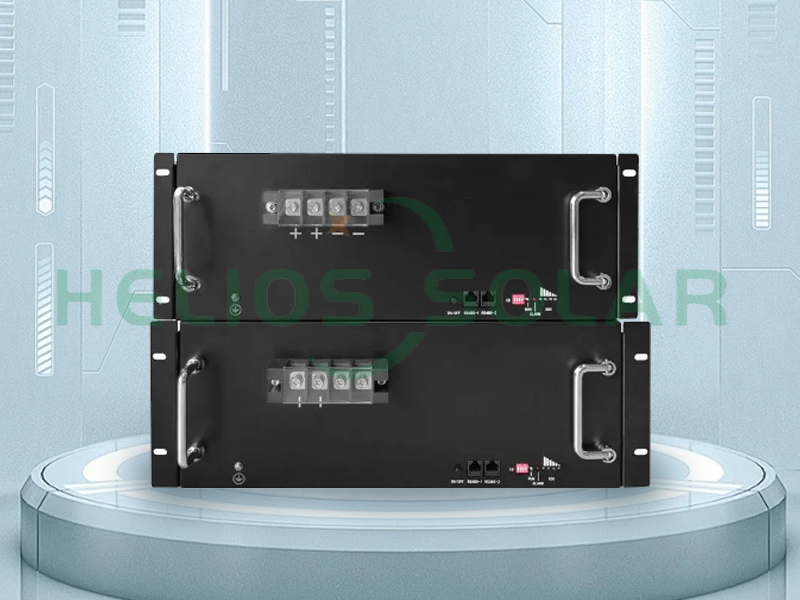In the growing field of energy storage solutions, rack-mounted lithium batteries have become a key technology, changing the way we store and manage energy. This article delves into the past and future of these innovative systems, exploring their development, applications, and their future potential.
Past: The evolution of rack-mounted lithium batteries
The journey of rack-mounted lithium batteries began in the late 20th century, when lithium-ion technology was first commercialized. Initially, these batteries were primarily used in consumer electronics such as laptops and smartphones. However, as the demand for more efficient and compact energy storage solutions continues to grow, the technology is starting to find its way into larger-scale applications.
By the early 2000s, the rise of renewable energy, especially solar and wind, created an urgent need for efficient energy storage systems. Rack-mounted lithium batteries become a viable solution with high energy density, longer life cycles and faster charging times compared to traditional lead-acid batteries. Their modular design is easily scalable, making them ideal for a variety of applications from data centers to telecommunications and renewable energy systems.
The introduction of rack-mounted configurations enables efficient use of space, allowing businesses and facilities to optimize their energy storage capabilities. These systems can be easily integrated into existing infrastructure, allowing for a seamless transition to more sustainable energy practices. As industries begin to realize the benefits of lithium batteries, the market for rack-mounted solutions is rapidly expanding.
Now: Current Applications and Advances
Today, rack-mounted lithium batteries are at the forefront of energy storage technology. They are widely used in commercial and industrial environments, including data centers, hospitals and manufacturing facilities. The ability to store energy produced by renewables makes them indispensable in the transition to a more sustainable energy grid.
One of the most important advancements in recent years has been the development of intelligent battery management systems (BMS). These systems enhance the performance and safety of rack-mounted lithium batteries by monitoring their health, optimizing charge cycles and preventing over-discharge. This technology not only extends the life of the batteries but also ensures they operate at peak efficiency.
In addition, integrating artificial intelligence (AI) and machine learning into energy management systems further improves the functionality of rack-mounted lithium batteries. These technologies enable predictive analytics, allowing businesses to predict energy needs and optimize battery usage accordingly. As a result, companies can reduce operating costs and enhance sustainability efforts.
Future: Innovation and Trends
Looking ahead, the future of rack-mounted lithium batteries is promising, with multiple trends and innovations on the horizon. One of the most important developments is ongoing solid-state battery research. Unlike traditional lithium-ion batteries, solid-state batteries use solid electrolytes, which provide higher energy density, greater safety and longer service life. If successful, this technology could revolutionize the energy storage world, making rack-mounted solutions more efficient and reliable.
Another trend is the increasing focus on recycling and sustainability. As demand for lithium batteries grows, so does the need for responsible disposal and recycling methods. Companies are investing in technology that can recover valuable materials from used batteries, reducing environmental impact and promoting a circular economy. This shift toward sustainability may impact the design and manufacturing processes of rack-mounted lithium batteries in the future.
Additionally, the rise of electric vehicles (EVs) is expected to drive innovation in battery technology. As the automotive industry transitions to electrification, demand for high-capacity, efficient energy storage solutions will increase. This trend may spread to the commercial sector, leading to advances in rack-mountable lithium batteries suitable for stationary and mobile applications.
In conclusion
The past and future of rack-mounted lithium batteries illustrate a remarkable journey of innovation and adaptation. From their humble beginnings in consumer electronics to their current position as an essential component of modern energy systems, these batteries have proven their worth in a variety of applications. Looking ahead, continued advancements in technology, sustainability, and integration with renewable energy sources will continue to shape the energy storage landscape.
As industry and consumers alike strive for more efficient and sustainable energy solutions, rack-mounted lithium batteries will undoubtedly play a vital role in this transition. With the potential of new technologies and the growing emphasis on recycling and sustainability, the future of rack-mounted lithium batteries is bright, promising a cleaner, more efficient energy landscape for generations to come.
Post time: Oct-24-2024


